Climate Crisis and the Bottom Line: Why the Economy Cannot Escape its Impact
CLIMATE CRISIS

The effects of climate change are far-reaching and increasingly felt all over the world. As the devastating impacts of global warming become more pronounced, our economic systems must also bear its consequences. From extreme weather events to rising sea levels, the economic costs of climate change are becoming too large for the global economy to ignore. In this blog post, we will discuss why the climate crisis has become an economic issue that cannot be avoided and how it is likely to affect the bottom line.
Understanding the Link Between Climate Crisis and the Economy
Climate crisis and the economy are intricately linked, with the impacts of one affecting the other in numerous ways. To understand this connection, it’s important to recognize how climate change can directly and indirectly influence economic systems.
One of the main ways climate change affects the economy is through changes in the availability and cost of natural resources. Rising global temperatures and shifting weather patterns can disrupt agricultural production, leading to reduced crop yields and increased food prices. This, in turn, can have a significant impact on both local and global food security, affecting millions of people around the world.
Climate change also poses risks to infrastructure, particularly in coastal regions. As sea levels rise, coastal communities face increased risks of flooding and erosion, leading to damage to homes, businesses, and critical infrastructure like ports and airports. These damages not only result in immediate costs for repairs and reconstruction but also have long-term economic consequences.
Additionally, the changing climate can affect consumer behavior and market demand. As individuals become more aware of the environmental impacts of their choices, there is a growing preference for sustainable and low-carbon products and services. This shift in consumer demand creates both challenges and opportunities for businesses, as those who can adapt and provide sustainable solutions stand to benefit economically.
Furthermore, climate change can also have indirect economic effects through its influence on social and political stability. Extreme weather events and environmental degradation can lead to displacement, conflicts over resources, and increased migration, all of which can strain economies and social systems.

Impacts of Climate Crisis on Various Sectors of the Economy
Climate change has far-reaching impacts on various sectors of the economy, affecting industries, businesses, and individuals in numerous ways. One of the sectors most directly impacted by climate change is agriculture. Rising temperatures and changing weather patterns can lead to reduced crop yields, affecting food production and increasing prices. This not only threatens global food security but also poses significant challenges for farmers and the agricultural industry as a whole.
The energy sector is another area greatly affected by climate change. As the world shifts towards renewable energy sources, traditional fossil fuel industries face the risk of becoming stranded assets. The transition to a low-carbon economy necessitates the abandonment of high-emission industries, leading to job losses and economic upheaval in regions heavily reliant on fossil fuel extraction and production.
The transportation sector is also vulnerable to the impacts of climate change. Extreme weather events can disrupt transportation networks, causing delays, damages, and disruptions in supply chains. Additionally, the push for decarbonization is leading to the increased adoption of electric vehicles, transforming the automotive industry and requiring infrastructure investments to support charging stations and renewable energy integration.
The tourism industry, particularly in coastal regions, faces the threat of rising sea levels and increased frequency of natural disasters. Beach erosion and coral reef degradation diminish the appeal of popular tourist destinations, leading to declining revenues for businesses dependent on tourism.

Rise in Natural Disasters and Its Economic Consequences
Natural disasters, such as hurricanes, floods, wildfires, and droughts, are on the rise due to climate change. These events have devastating effects not only on human lives and the environment but also on the global economy. The economic consequences of natural disasters are significant and far-reaching, affecting various sectors and communities around the world.
Firstly, the immediate economic costs of natural disasters are immense. The destruction of homes, infrastructure, and businesses leads to billions of dollars in damages and loss. Rebuilding and recovery efforts require substantial financial resources, straining local and national economies. Governments often need to allocate funds for relief efforts, diverting money from other areas such as healthcare, education, and social programs.
Additionally, natural disasters can have long-term economic consequences. For communities heavily dependent on industries like agriculture, the loss of crops, livestock, and farmland can lead to prolonged economic hardship. Tourism-dependent regions may experience a decline in visitors and revenue as natural attractions become damaged or inaccessible.
Furthermore, the economic impacts of natural disasters extend beyond the directly affected areas. Supply chain disruptions caused by extreme weather events can have a ripple effect, impacting businesses and industries globally. For example, when a hurricane hits a major shipping hub, it can disrupt the transportation of goods, leading to delays and increased costs throughout the supply chain.
Moreover, the increasing frequency and intensity of natural disasters can also impact insurance premiums and financial markets. Insurers may need to increase premiums to compensate for the higher risk of payouts, making insurance less affordable for individuals and businesses. Financial markets may also experience volatility as investors grapple with the uncertainty and potential economic impacts of natural disasters.
The Cost of Delaying Climate Crisis
Delaying climate action comes with significant costs that go beyond the immediate environmental impact. As the effects of climate change intensify, so do the economic consequences of inaction. The longer we wait to take action, the higher the price tag becomes.
One of the most apparent costs of delaying climate action is the damage caused by natural disasters. With the increasing frequency and intensity of hurricanes, floods, and wildfires, the financial burden of recovery and rebuilding grows exponentially. Governments are forced to divert funds from other areas to respond to these disasters, impacting healthcare, education, and social programs. Moreover, the long-term economic impact on affected communities, particularly in agriculture-dependent regions, can be devastating. Crop loss, destruction of farmland, and prolonged economic hardship become the norm.
Another cost of delaying climate action is the strain it puts on businesses and industries. As regulations and consumer preferences shift towards sustainability, companies that fail to adapt face the risk of becoming outdated and irrelevant. Those that continue to rely on high-emission practices or fail to adopt clean technologies face potential financial losses, market share erosion, and even bankruptcy. On the other hand, companies that proactively embrace sustainable practices can gain a competitive advantage, attracting environmentally conscious consumers and investors.
Delaying climate action also poses risks to financial markets. The uncertainties surrounding climate change and the potential economic impacts of natural disasters can lead to market volatility. Investors become wary, which can result in less investment and reduced economic growth. Insurers may also raise premiums or even withdraw coverage, leaving individuals and businesses vulnerable to financial losses from climate-related damages.
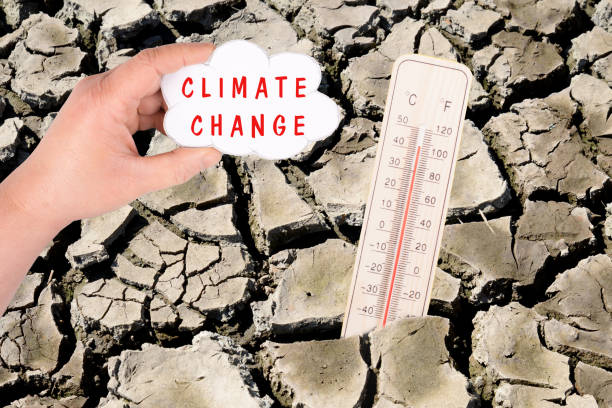
Financial Risks Posed by Climate Change
As the impacts of climate change continue to escalate, so do the financial risks associated with it. Climate change poses a significant threat to financial stability and has the potential to disrupt economies worldwide. One of the main financial risks posed by climate change is the increased frequency and severity of natural disasters. These events can lead to billions of dollars in damages, impacting both businesses and governments. The costs associated with rebuilding and recovery efforts can strain budgets and divert funds from other critical areas, such as healthcare and education.
Furthermore, climate change also presents risks to the financial sector. As the physical risks of climate change increase, such as extreme weather events and rising sea levels, financial institutions may face significant losses. These institutions have investments in sectors vulnerable to climate-related impacts, such as real estate in coastal regions or agricultural businesses affected by changing weather patterns.
Transition risks also play a role in the financial risks posed by climate change. As the world transitions to a low-carbon economy, companies that are heavily reliant on fossil fuels may experience significant financial losses. The devaluation of fossil fuel assets can lead to stranded assets and stranded workers, as jobs in high-emission industries become obsolete.
Investors and insurers are also exposed to financial risks due to climate change. The uncertainty surrounding climate-related impacts can lead to market volatility, making it challenging for investors to make informed decisions. Insurers may also need to increase premiums or withdraw coverage, leaving individuals and businesses vulnerable to climate-related damages.
In summary, climate change poses significant financial risks that can impact businesses, governments, investors, and insurers. Addressing these risks requires proactive measures to mitigate the physical and transition risks associated with climate change. The need for sustainable and resilient financial systems has become more pressing than ever, as the economic consequences of climate change continue to unfold.
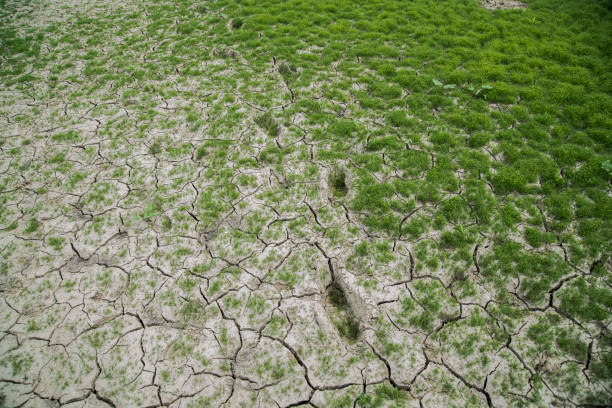
Business Opportunities in a Low-Carbon Economy
The transition to a low-carbon economy presents numerous business opportunities for companies willing to embrace sustainable practices and innovative solutions. As the world becomes more aware of the urgent need to combat climate change, there is a growing demand for environmentally friendly products and services. This shift in consumer preferences creates a market ripe with potential for businesses that can meet these demands.
The push for clean and renewable energy sources opens doors for companies involved in solar, wind, and hydroelectric power. Investing in renewable energy not only helps reduce carbon emissions but also provides a stable and long-term revenue stream.
Another area of opportunity is in energy efficiency. As individuals and businesses strive to reduce their carbon footprint, there is an increasing demand for energy-efficient products and services. Companies that specialize in energy-efficient technologies, such as smart homes, LED lighting, and energy management systems, can capitalize on this market and help customers save money on their energy bills.
Furthermore, sustainable transportation is a growing industry with immense potential. The transition to electric vehicles is gaining momentum, and businesses involved in the production of electric cars, charging infrastructure, and renewable energy integration for transportation can thrive in this market.
In addition to these sectors, there are also opportunities in sustainable agriculture, green construction, waste management, and eco-tourism, to name a few. Embracing sustainability not only allows businesses to contribute to a greener future but also positions them as leaders in their industries and attracts environmentally conscious customers and investors.
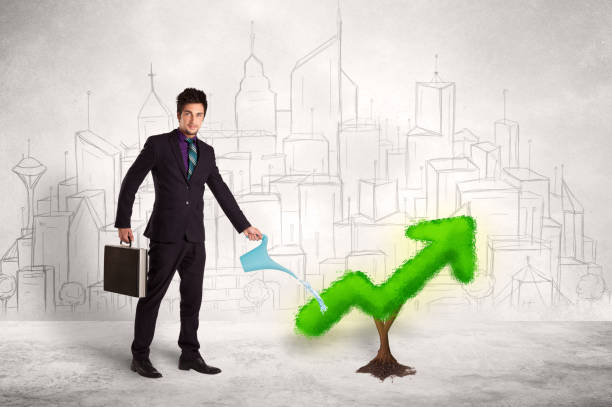
Government Policies and Economic Responses to Climate Crisis
Government policies and economic responses play a crucial role in addressing the impacts of climate change on the economy. Recognizing the urgent need for action, governments around the world are implementing various policies and measures to mitigate climate change and foster economic resilience.
One of the key responses from governments is the implementation of carbon pricing mechanisms, such as carbon taxes or cap-and-trade systems. These policies create economic incentives for businesses and industries to reduce their greenhouse gas emissions, encouraging the transition to cleaner and more sustainable practices. By internalizing the costs of carbon pollution, governments aim to promote investments in low-carbon technologies and spur innovation.
Additionally, governments are investing in renewable energy infrastructure and supporting the development of clean technologies. Through subsidies, grants, and tax incentives, governments are fostering the growth of industries such as solar, wind, and geothermal energy, creating job opportunities and stimulating economic growth.
Furthermore, governments are also implementing regulations and standards to promote energy efficiency, sustainable transportation, and green building practices. These measures aim to reduce energy consumption, promote the adoption of electric vehicles, and encourage sustainable development. By setting clear guidelines and targets, governments provide businesses and industries with a roadmap to navigate the transition to a low-carbon economy.
In response to the increasing risks posed by climate change, governments are also prioritizing resilience and adaptation measures. These include investments in infrastructure to protect against flooding and extreme weather events, as well as initiatives to enhance water management systems and ensure food security.



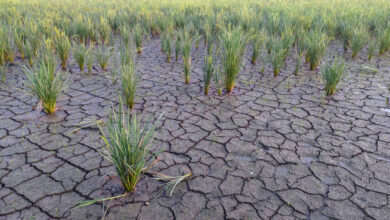

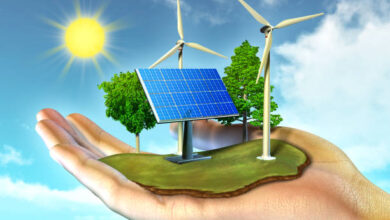
Very nice